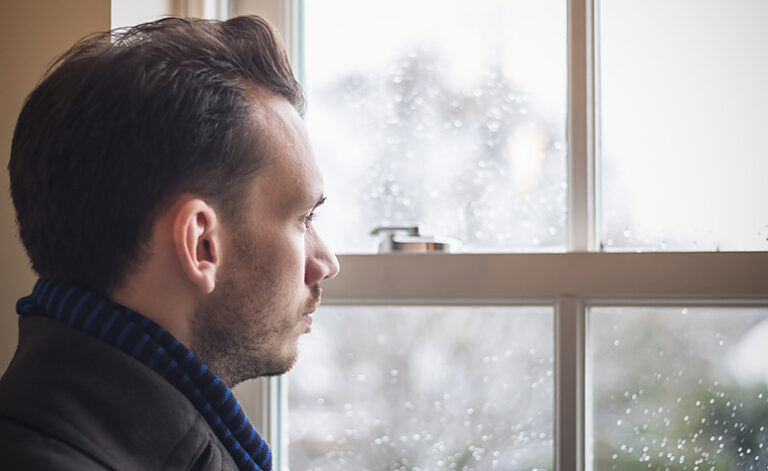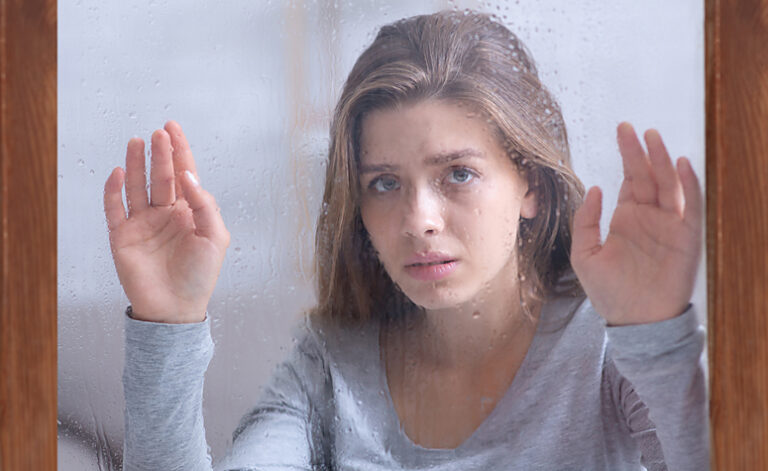Seasonal Affective Disorder …
Symptoms, Causes and Treatment
Seasonal affective disorder (SAD), often referred to as “winter depression”, is a clinically recognised type of depression and mental health condition. Symptoms of SAD typically manifest according to seasonal changes, particularly during the winter months when people have less exposure to natural daylight and gradually diminish in spring and summer. These often debilitating symptoms can include persistent low moods, a lack of energy, and poor concentration.
Most people with SAD reside in the northern and southern hemispheres (locations that have longer hours of darkness during winter). SAD is less prevalent among those who live near the equator, where daylight hours are consistently long and bright.

Signs and Symptoms of Seasonal Affective Disorder
In most cases, the signs and symptoms of SAD appear during autumn or early winter when there’s limited sunlight and go away during the sunnier days of spring and summer. Less commonly, people with the opposite pattern have symptoms that begin in spring or summer. In either case, symptoms may start out mild and become more severe as the season progresses.
Common signs and symptoms of SAD include the following:
- Feeling low and depressed
- Feeling exhausted during the day and needing to sleep longer
- Having difficulty getting up in the morning in spite of having more sleep
- Social withdrawal and loss of pleasure and interests
- Loss of libido
- Irritability, tension, stress and anxiety
- Having carbohydrate cravings, waking up in the night to eat, and weight gain
- Feelings of despair, guilt and worthlessness
- Suicidal thoughts
Symptoms specific to winter-onset seasonal affective disorder, sometimes referred to as winter depression, may include the following:
- Oversleeping
- Appetite changes, especially a craving for foods high in carbohydrates
- Weight gain
- Tiredness or low energy
Symptoms specific to summer-onset seasonal affective disorder, sometimes referred to as summer depression, may include the following:
- Trouble sleeping (insomnia)
- Poor appetite
- Weight loss
- Agitation or anxiety
- Increased irritability
Seasonal changes and bipolar disorder
People who have bipolar disorder are at increased risk of seasonal affective disorder. In some people with bipolar disorder, episodes of mania may be linked to a specific season. For example, spring and summer can bring on symptoms of mania or a less intense form of mania (hypomania), anxiety, agitation and irritability. They may also experience depression during the fall and winter months.

What lies behind us and what lies before us are
tiny matters compared to what lies within us
Why does the Weather Affect My Mood?
As with all types of depression, the exact cause of SAD can vary from person to person. The likelihood of developing SAD may also be due to a combination of factors. However, according to research, some specific factors are associated with SAD.
Poor sleep patterns
Your circadian rhythm, or internal body clock, uses sunlight to determine when you should wake up or go to sleep. Limited sunlight during winter may disrupt this process, resulting in symptoms of SAD.- Serotonin and Melatonin levels
SAD is also believed to be linked to activity in the hypothalamus, the area of the brain that connects the nervous system to the endocrine system. Varying levels of melatonin (the “sleep hormones”) are produced in the hypothalamus based on the amount of sunlight exposure, influencing our sleep and mood patterns.
In like manner, limited sunlight can result in a drop in the amount of serotonin the brain produces. Serotonin is a chemical in the brain that influences our mood; thus, reduced amounts of it can lead to symptoms of depression.

Why do People get Seasonal Affective Disorder?
Additional factors may increase an individual’s vulnerability to SAD. These include:
Age
The risk of experiencing SAD decreases with age, with the highest incidence rate observed amongst those between the ages of 18-30.- Gender
Women are more likely to experience SAD than men. - Location
There is a higher incidence of SAD in regions of the world where there is reduced sunlight and longer nights during the winter. Generally, the further your location is from the equator, the greater your risk of experiencing SAD. Working outdoors where you have more sunlight exposure, may also lower your risk of developing SAD. - Family history
Genetics may also be a factor in the development of SAD. If you have a family history of SAD or other types of depression, you have a higher likelihood of developing the condition yourself.
If you are already struggling with depression, SAD can worsen the existing symptoms of depression that you experience throughout the year. If you notice a connection between your feeling of depression and the onset of nightfall during winter, it’s essential to know that SAD can be treated. It’s crucial to seek help immediately so you can start your process of recovery.

Seasonal Affective Disorder Treatment
To receive a diagnosis of SAD, you should have symptoms that emerge during the winter months and diminish in the spring on a yearly basis. If you or anyone you know is struggling with SAD, understand that there are treatment options that can alleviate the symptoms, enabling you to live the life you desire, regardless of the time of year.
Common SAD treatments include:
- Light therapy using lightboxes
Most people experience an improvement in symptoms within the first week of light therapy, making it a highly effective treatment for SAD. Light therapy makes use of a powerful lamp that mimics natural light, and high-quality lightboxes are recommended as they require a shorter exposure time (up to 30 minutes at a time). Some patients opt for “lower lux” lightboxes, which can be conveniently positioned on their desk corners at work. The sunlight replicated through light therapy helps trigger the release of serotonin in the brain, leading to an enhanced mood.
Some people also find a dawn simulator effective at treating SAD. It is basically a light-based alarm clock with a timer that you adjust before you go to sleep. The light in a dawn simulator replicates the morning sunrise, helping your body clock and allowing you to have a healthier sleep pattern.
A guide for buying lightboxes, including the possible risks and side effects, is available on the SADA website.
Talking therapies
Cognitive behavioural therapy (CBT) is also recognised for its effectiveness in improving symptoms of winter depression and potentially preventing its recurrence in the future.
CBT establishes the connection between our thoughts, behaviour, and mood. The therapeutic process involves assisting people in recognising their negative thought patterns, which can lead to unhealthy behaviours and emotions.
CBT therapy also helps people modify underlying beliefs that could be reinforcing their unhealthy thinking patterns and behaviours. Empowering people to challenge their negative thoughts and alter their behaviours can result in significant improvements in mood.
Medication
Selective serotonin reuptake inhibitors (SSRIs), a type of antidepressant drug, prove effective in the treatment of SAD, particularly when used in conjunction with therapy. To maximise its efficacy as a SAD medication, SSRIs, such as fluoxetine or sertraline, should be started in the autumn and discontinued in the spring. Your GP or psychiatrist can prescribe antidepressant medication for you, but make sure you understand its possible side effects or associated risks by discussing them with your doctor or reading the accompanying leaflet.
FREE Seasonal Affective Disorder Assessment
If your or a loved one are struggling with Seasonal Affective Disorder (SAD), we understand the challenges you’re facing and we’re here to offer compassionate help.
Our highly trained advisers are available to speak to you right away, simply call 0808 252 3379 today.
We can discuss your concerns in complete confidence, explore the options for treatment, and help you to understand what will work best for you.
We’ll also help you to book your free Seasonal Affective Disorder (SAD) assessment there and then, with appointments usually available within only a few days.
We understand that taking the first step can be the most difficult, but we’re here to support – with no pressure or judgement.
Professional and compassionate help is just a phone call or click away.




